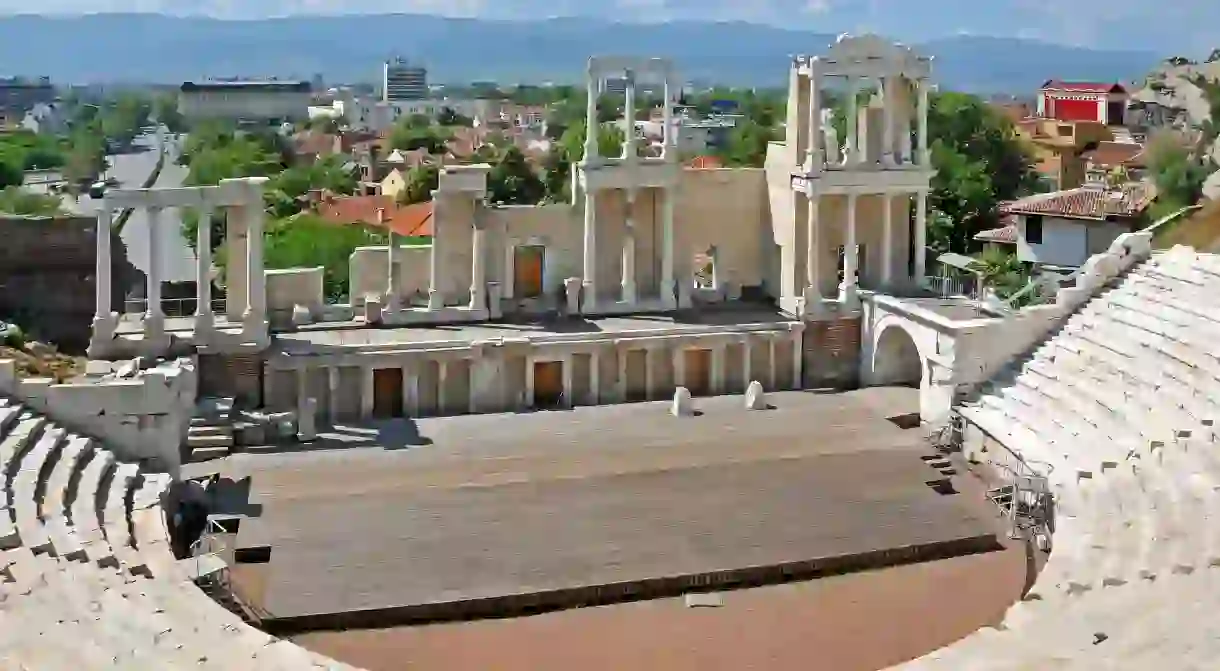15 Archaeological Discoveries Made in Bulgaria

Did you know that the oldest gold treasure was found in Bulgaria, and that they were found by chance? Very often regular people were working in their gardens when they found centuries-old treasures. Here’s our list of the most amazing archaeological discoveries made in Bulgaria.
Varna Necropolis and the oldest gold treasure
Panagyurishte Gold Treasure
Museum

The treasure is displayed in The National History Museum in Sofia.
Valchitran Gold Treasure
Museum

Rogozen Treasure
This discovery included 165 silver containers, some of them with golden gilt. It is considered very important because of the various motifs unveiling what the life of the ancient Thracians was.

Borovo Treasure
A table set of five silver-gilt containers with an inscription that suggests that the treasure might have been a present from one ancient Thracian king to another ruler. It was discovered in 1974 while ploughing near the village of Borovo. You can see the set in Rousse History Museum.

The Vampire from Sozopol
Museum

Starosel Thracian cult complex and mausoleum
Starosel is a small village today but used to be a Thracian residence back in 5th century AD. In 2000, a magnificent king’s tomb was found near the village together with some fine gifts for the life after death and a symbolic grave. Starosel Tomb is open for visitors.
Thracian Temple Complex, Starosel, +359 884 900623

Kazanlak Tomb

Sveshtari Tomb

The ancient city of Perperikon
Excavations in the Rhodope Mountains in 2000 revealed a whole ancient city with a palace and a huge altar for ancient wine rituals. Further on-site work discovered a 5th-century church. Nowadays you can stroll around the ancient city and discover for yourself layers of history built one upon the other.

The ancient Thracian capital Seuthopolis
Thracian King Seuthes III ruled the Odrysian Kingdom back in 4th century AD. Around 325 AD he started building a new capital named after himself, Seuthopolis, with a royal palace and a sanctuary. The city was found during the construction of the Koprinka Reservoir and the artefacts were taken away. It was decided, however, that the construction of the reservoir should continue and now the ancient city lies at the bottom of the reservoir.

The Ancient Serdica in the heart of Sofia
It’s been known for more than 140 years that under today’s Sofia the remains of the ancient Roman city Ulpia Serdica lie. The major archaeological excavations, however, were started after the bombing of Sofia during World War II. Today you can see some of the buildings and streets of Serdica between the Presidency and TSUM (ЦУМ) trade centre in the heart of Sofia, near the mineral water fountains across the Mosque, and near the Catholic Cathedral. The Roman Emperor Constantine the Great spent a lot of time in Serdica famously saying “Serdica is my Rome”.

Plovdiv Roman Theatre
For many years, the place where the Ancient Roman Theatre in Plovdiv is situated today was schoolyard where children used to play until the 1960s when excavations took place. The theatre can host up to 7000 guests and was used both as a theatre and as a gathering spot for the local noble families to discuss political issues. Nowadays, the theatre is used for open-air performances in summer and it’s an open-air museum that can be visited anytime.

Stara Zagora’s Augusta Traiana forum
In 106 AD, Emperor Marcus Ulpius Traianus gave his name to the city, Stara Zagora, together with the rights of a city-state eligible to mint its own bronze coins. At the time, Augusta Traiana was the second biggest city in the Roman province of Thrace, after Philippopolis (today Plovdiv). Many new buildings were constructed at that time, including the forum discovered during construction works and functioning as an open-air museum and a summer theatre stage.

Begliktash megalith sanctuary
The Thracians had a sophisticated set of rituals connected with the worship of the Sun. Begliktash is one of the most famous Thracian sanctuaries, which is situated 5 km from the seaside town of Primorsko. It was discovered more than a century ago but for a long time it was not accessible because it was part of a communist leader’s property. The huge rocks are naturally formed and naturally arrange, but some of them have been carved for religious rituals by the Thracians.














